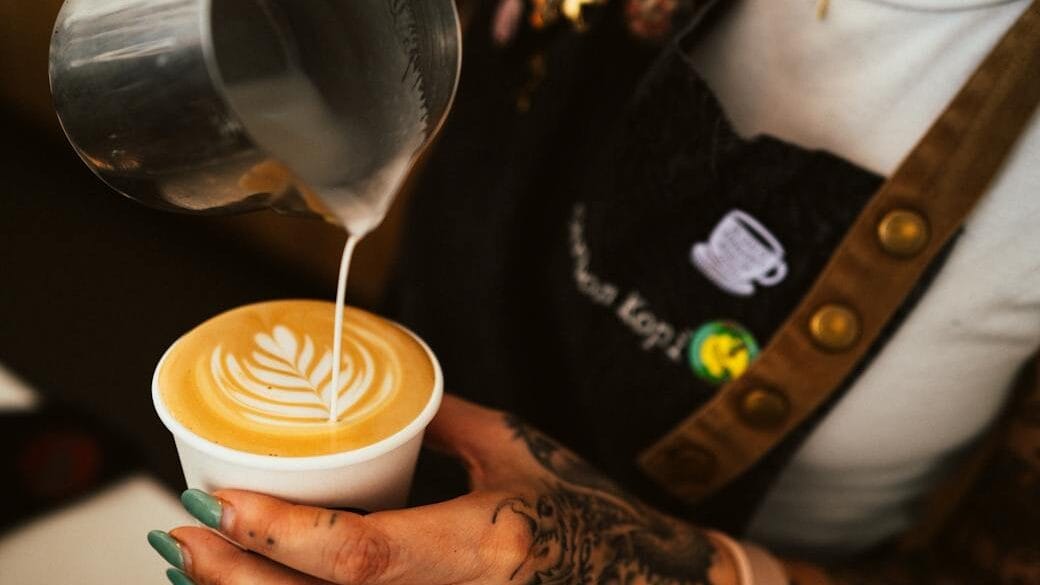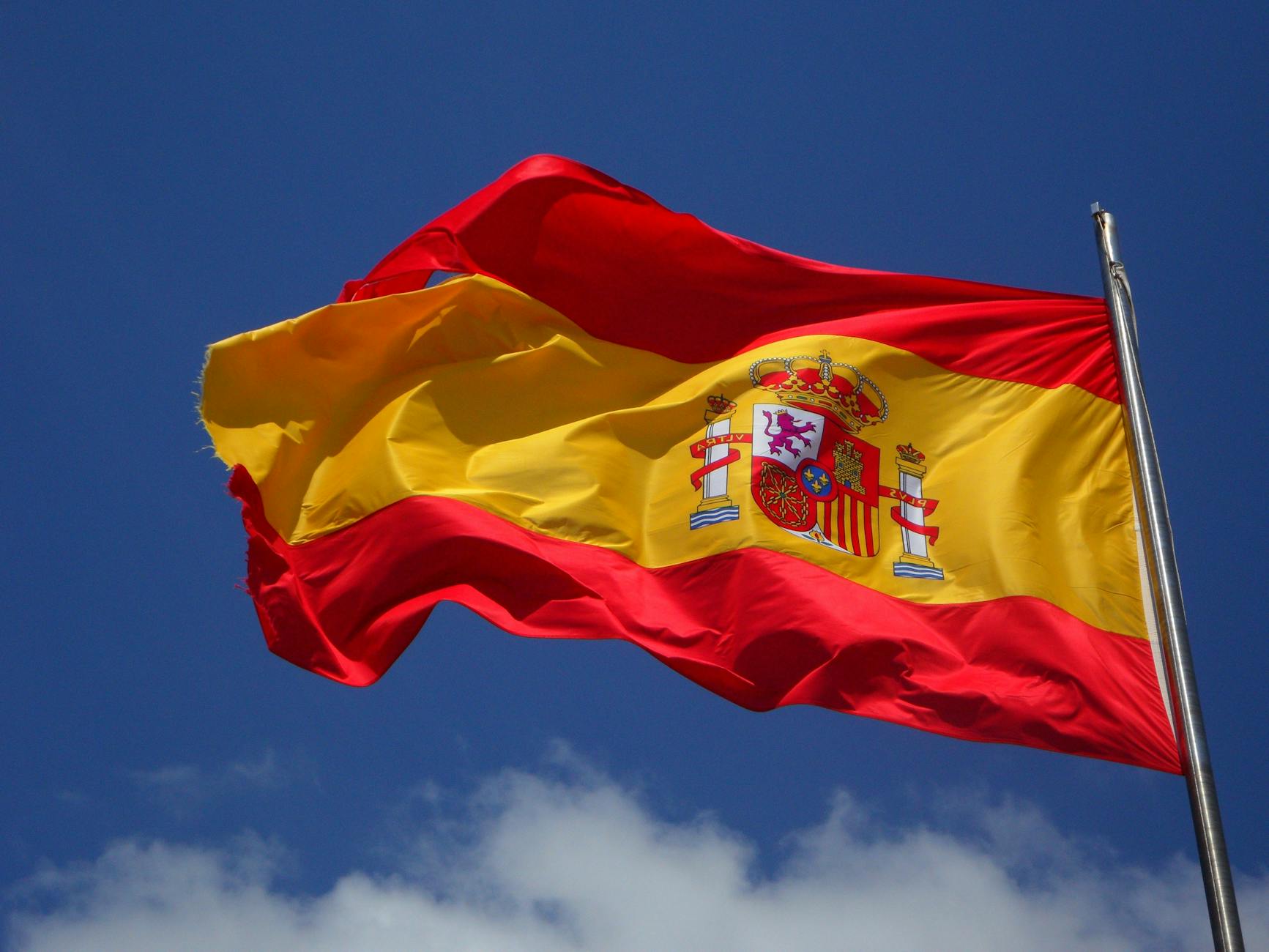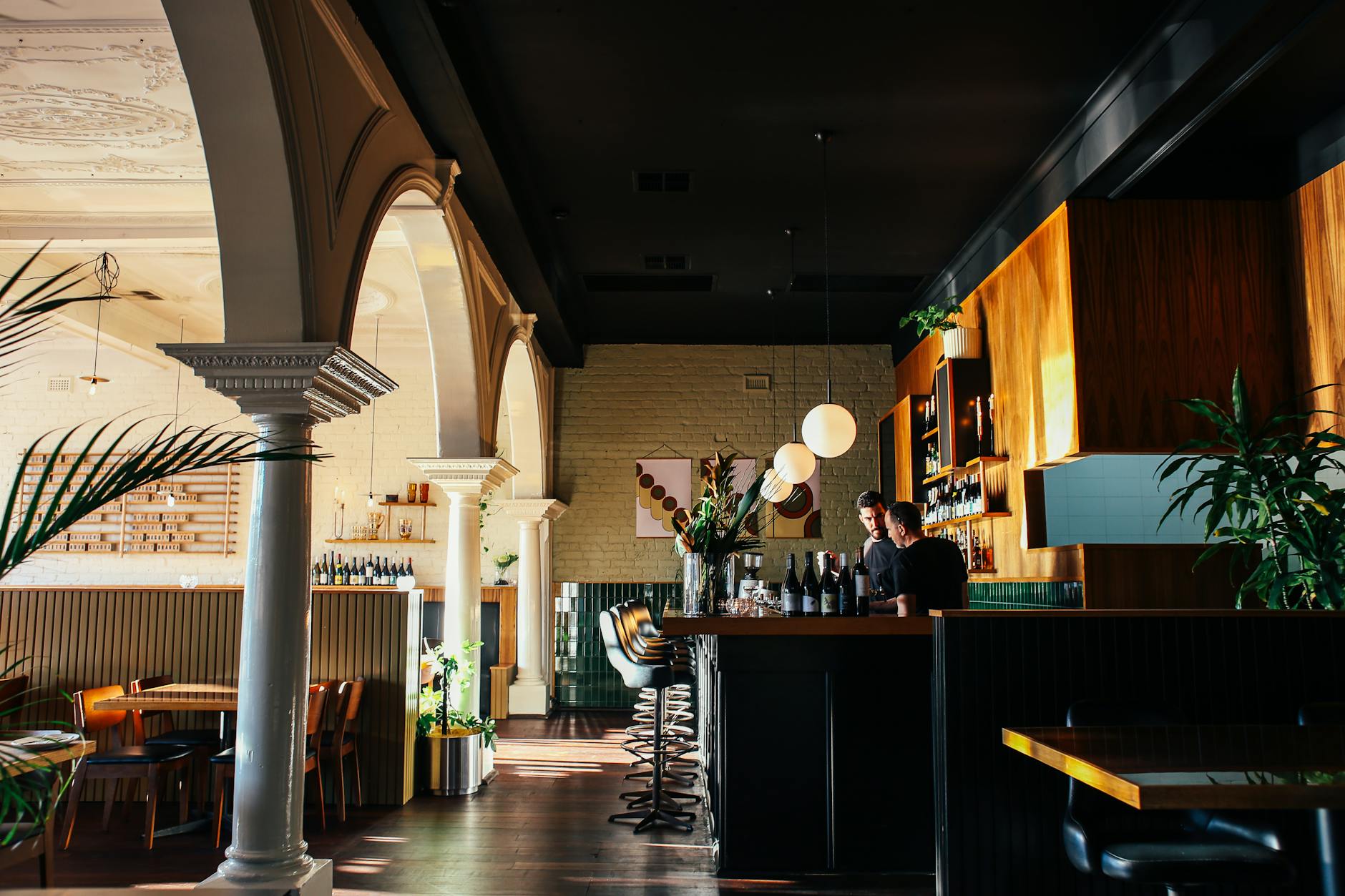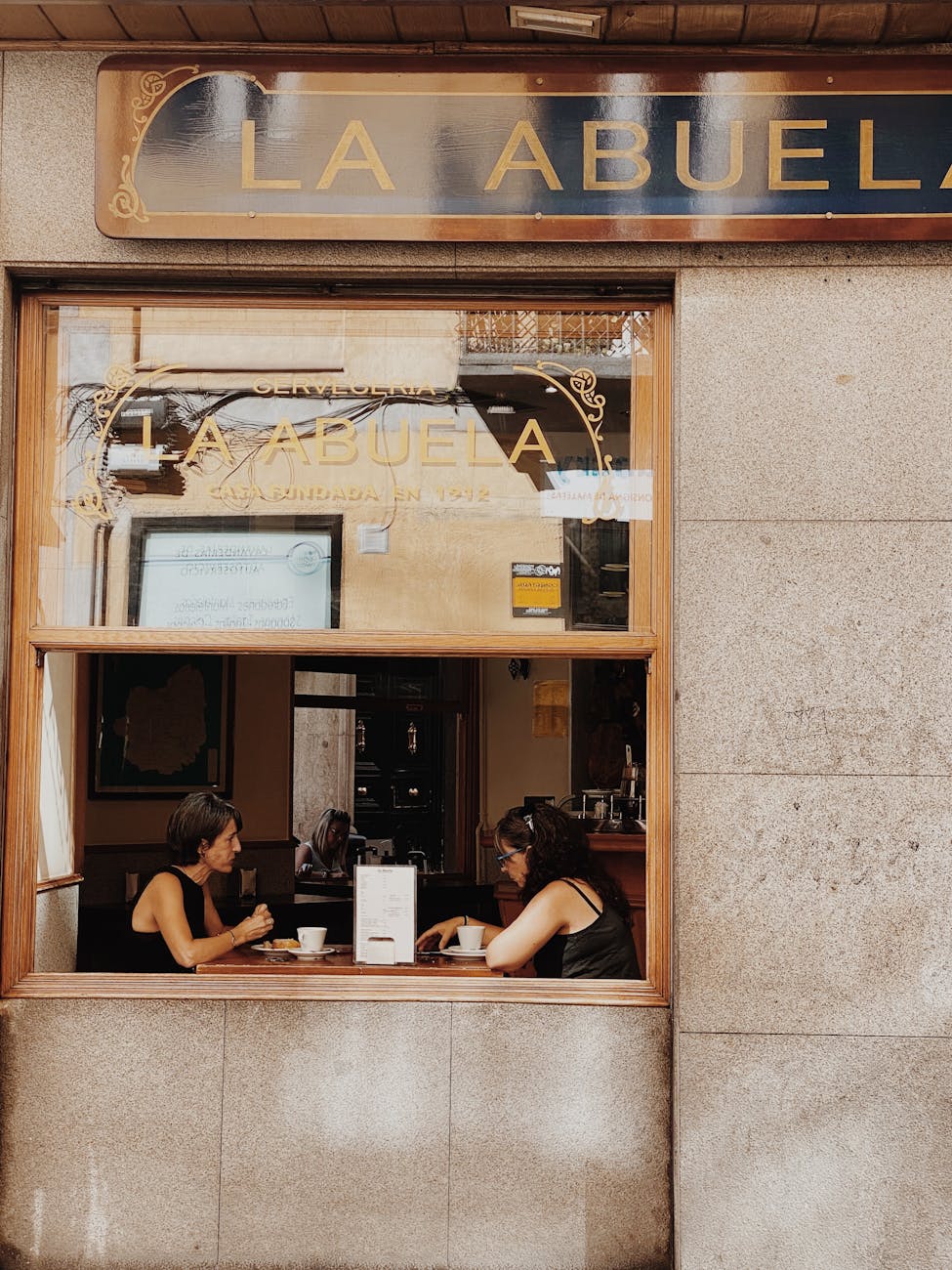With our Café con Leche recipe, you can transport yourself to the sunny streets of Spain with our take on the classic café con leche.
This beloved Spanish coffee drink, which translates to “coffee with milk,” is a staple in Spanish cafes and homes alike.
Café con leche has been a part of Spanish culture for centuries, allegedly dating back to the early 1900s.
Unlike Italian coffee drinks, which often use espresso, Spanish café con leche traditionally uses strong, filtered coffee.
In this article, we will present Café con Leche recipe and discuss this brewing method in detail.

The Origins of the Café con Leche Recipe
Café con leche, literally translating to “coffee with milk” in Spanish, is more than just a simple combination of these two ingredients.
This beloved beverage has a rich history deeply intertwined with Spanish culture and has since spread its influence across the globe.
To truly appreciate the significance of café con leche, we must delve into its origins and trace its journey through time.
The story of café con leche begins in 17th century Spain, during the reign of the lesser Habsburgs. At this time, coffee was still considered a luxury item, primarily enjoyed by the upper echelons of society.
However, a significant shift occurred when Pope Clement VIII gave his blessing for the masses to consume coffee, effectively democratizing the beverage (Coffeeness, 2024).
Sustainable Version of the Café con Leche Recipe
As coffee became more accessible to the general population, the Spanish began to experiment with different ways of preparing and enjoying it.
It was during this period that the concept of mixing coffee with milk in equal parts began to take shape, laying the foundation for what would eventually become café con leche.
Ingredients:
- 120ml strong, sustainably sourced coffee
- 120ml organic, locally sourced milk
- Optional: brown sugar to taste
Instructions:
- Brew strong coffee using your preferred method (we recommend a Moka pot for authenticity).
- In a separate pan, heat the milk until hot but not boiling.
- Pour the coffee into a large cup, filling it halfway.
- Add the hot milk, creating a 1:1 ratio of coffee to milk.
- Stir and add sugar if desired.
For an eco-friendly twist, serve in a reusable ceramic cup and use a milk alternative like oat or almond milk to reduce your carbon footprint.
Interesting Facts When You Prepare Our Café con Leche Recipe
In Spain, café con leche is typically enjoyed at breakfast, accompanied by churros or toast with tomato and olive oil.
Square, a tech company providing integrated business solutions, unveils Spain’s coffee consumption habits. Their study of restaurant clients reveals that 8 out of 10 Spaniards prefer milk in their coffee.
- Specifically, latte tops the list at 20.9%,
- followed by café con leche at 16.9%.
- Next, flat white claims 16.5%,
- while cappuccino and cortado account for 12.5% and 12.2% respectively.
- Meanwhile, black coffee drinkers mostly choose espresso (11.9%)
- or Americano (8.4%).
- In short, Spaniards overwhelmingly favour milk-based coffee drinks, with various preparations catering to different tastes (Square, 2024).

The Spanish Coffee Revolution
The introduction of coffee to Spain marked a significant cultural shift. Prior to coffee’s arrival, the most popular hot beverages in the country were hot chocolate and atole, both of which had been consumed since pre-Hispanic times. Coffee, with its stimulating properties and rich flavor, offered a new and exciting alternative to these traditional drinks.
Interestingly, the coffee plant itself didn’t make its way to the American continent until the 1720s, when a French officer brought a plant to the Caribbean island of Martinique.
From there, coffee cultivation spread to other Caribbean islands, including Cuba.
It wasn’t until the 1790s that the first coffee plants were introduced to the Mexican port of Veracruz, marking the beginning of coffee’s journey through Latin America (My Slice of Mexico, 2021).
The Evolution of Café con Leche
As café con leche grew in popularity, it began to evolve and adapt to local tastes and preferences.
One of the key elements that sets café con leche apart from other milk-based coffee drinks is the use of scalded milk.
Unlike steamed milk used in lattes or cappuccinos, scalded milk is heated to just below boiling point, creating a unique flavor profile and texture.
The invention of the espresso machine in the early 20th century brought about another significant change in the preparation of café con leche.
Many establishments began using espresso as the base for the drink, resulting in a stronger, more concentrated coffee flavor that could stand up to the rich, scalded milk.
Café con Leche in Spanish Culture
As café con leche became more deeply ingrained in Spanish culture, it took on a significance that went far beyond its role as a morning pick-me-up.
The drink became an integral part of social interactions and café culture throughout Spain. It wasn’t uncommon for people to gather in cafés at various times of the day to enjoy a café con leche and engage in conversation with friends or colleagues.
The cultural importance of café con leche is perhaps best illustrated by its role in Spanish literature and art.
Many Spanish writers and artists have referenced the drink in their works, using it as a symbol of everyday life and social connection.
Even Ernest Hemingway, the American writer who had a deep love for Spanish culture, often mentioned café con leche in his writings about Spain.
The Global Coffee Landscape and Café con Leche
In today’s global coffee culture, café con leche holds a unique position.
While it shares similarities with other milk-based coffee drinks like the Italian caffè latte or the French café au lait, it maintains its identity through its preparation method and cultural significance.
The rise of speciality coffee culture in recent years has led to renewed interest in traditional coffee preparations, including café con leche.
Many coffee shops now offer their own café con leche recipe.
Those variations of the coffee drink use single-origin beans and experiment with different milk types.
This helps to create new flavour profiles while still honouring the drink’s Spanish roots.

Sustainability and Ethical Considerations
As with all aspects of the coffee industry, the production and consumption of café con leche raises questions about sustainability.
Many Spanish coffee roasters and café owners are now placing greater emphasis on sourcing their beans from farms.
The selection of farms is based on their individual practice of sustainable agriculture and provide fair wages to workers.
Furthermore, there’s a growing trend towards using locally sourced, organic milk in café con leche preparations.
The milk sourcing process reflects a broader movement towards more sustainable and environmentally friendly beverage options.
The Future of Café con Leche
As we look to the future, it’s clear that café con leche will continue to play an important role in Spanish culture and beyond.
The drink’s simplicity and versatility make it adaptable to changing tastes and preferences, while its rich history ensures its enduring cultural significance.
One emerging trend is the increasing availability of plant-based milk alternatives for café con leche.
As more consumers opt for dairy-free diets, many cafés are now offering versions of the drink made with soy, almond, or oat milk, opening up new possibilities for flavor combinations and catering to a wider range of dietary preferences.
Another exciting development is the growing interest in experimenting with different coffee origins and roast profiles for café con leche.
While traditionally made with dark roast coffee, some specialty cafés are now offering versions made with lighter roasts, highlighting the unique flavor characteristics of single-origin beans.

Conclusion
From its humble beginnings in 17th century Spain to its current status as a beloved beverage enjoyed around the world, café con leche has come a long way. Its journey reflects not only the evolution of coffee culture but also the complex interplay of history, culture, and globalization.
As we savor our next cup of café con leche, we can appreciate the centuries of tradition and innovation that have gone into creating this seemingly simple yet profoundly significant drink. Whether enjoyed as a morning ritual, a social lubricant, or a connection to cultural heritage, café con leche continues to bring people together and provide comfort in an ever-changing world.
In essence, café con leche is more than just coffee with milk – it’s a testament to the enduring power of food and drink to shape our cultures, our social interactions, and our daily lives. As we move forward, it will undoubtedly continue to evolve, but its core essence – that perfect balance of strong coffee and creamy milk – will remain a beloved constant for coffee lovers around the world.
References
Coffeeness (2024) What Is a Cafe Con Leche? A Spanish National Treasure. Available at: https://www.coffeeness.de/en/what-is-a-cafe-con-leche/ (Accessed: 22 September 2024).
My Slice of Mexico (2021) Coffee in Mexico and “Café con leche”. Available at: https://mysliceofmexico.ca/2021/02/07/coffee-in-mexico-and-cafe-con-leche/ (Accessed: 22 September 2024).
Perfect Daily Grind (2020) What Is A Café Con Leche?. Available at: https://perfectdailygrind.com/2020/09/what-is-a-cafe-con-leche/ (Accessed: 22 September 2024).
Ponte Vecchio (2023) Café con leche: what it is and how to make it at home. Available at: https://pontevecchiosrl.it/en/cafe-con-leche/ (Accessed: 22 September 2024).
Wikipedia (2024) Café con leche. Available at: https://en.wikipedia.org/wiki/Caf%C3%A9_con_leche (Accessed: 22 September 2024).
Citations
[1] https://mysliceofmexico.ca/2021/02/07/coffee-in-mexico-and-cafe-con-leche/
[2] https://www.coffeeness.de/en/what-is-a-cafe-con-leche/
[3] https://en.wikipedia.org/wiki/Caf%C3%A9_con_leche
[4] https://perfectdailygrind.com/2020/09/what-is-a-cafe-con-leche/
[5] https://pontevecchiosrl.it/en/cafe-con-leche/
[6] https://eskapas.com/turkish-coffee-culture/
[7] https://en.wikipedia.org/wiki/Turkish_coffee
[8] https://en.wikipedia.org/wiki/Decaffeination
Hey there.
faircoffee.co.uk, Thanks for keeping a thoughtful corner of the internet alive.
I recently published my ebooks and training videos on
https://www.hotelreceptionisttraining.com/
They feel like a hidden gem for anyone interested in hospitality management and tourism. These ebooks and videos have already been welcomed and found very useful by students in Russia, the USA, France, the UK, Australia, Spain, and Vietnam—helping learners and professionals strengthen their real hotel reception skills. I believe visitors and readers here might also find them practical and inspiring.
Unlike many resources that stay only on theory, this ebook and training video set is closely connected to today’s hotel business. It comes with full step-by-step training videos that guide learners through real front desk guest service situations—showing exactly how to welcome, assist, and serve hotel guests in a professional way. That’s what makes these materials special: they combine academic knowledge with real practice.
With respect to the owners of faircoffee.co.uk who keep this platform alive, I kindly ask to share this small contribution. For readers and visitors, these skills and interview tips can truly help anyone interested in becoming a hotel receptionist prepare with confidence and secure a good job at hotels and resorts worldwide. If found suitable, I’d be grateful for it to remain here so it can reach those who need it.
Why These Ebooks and Training Videos Are Special
They uniquely combine academic pathways such as a bachelor of hospitality management or a master’s degree in hospitality management with very practical guidance on the front desk agent description. They also cover the hotel front desk job description, and detailed hotel front desk tasks.
The materials go further by explaining the hotel reservation process, hotel check-in, check-out flow, guest relations, and dealing with guest complaints—covering nearly every situation that arises in the daily business of a front office operation.
Beyond theory, my ebooks and training videos connect the academic side of hospitality management studies with the real-life practice of hotel front desk duties and responsibilities.
– For students and readers: they bridge classroom study with career preparation, showing how hotel and management course theory link directly to front desk skills.
– For professionals and community visitors: they support career growth through questions for receptionist, with step-by-step questions to ask a receptionist in an interview. There’s also guidance on writing a strong receptionist description for resume.
As someone who has taught hotel and management courses for nearly 30 years, I rarely see materials that balance the academic foundation with the day-to-day hotel front desk job responsibilities so effectively. This training not only teaches but also simulates real hotel reception challenges—making it as close to on-the-job learning as possible, while still providing structured guidance.
I hope the owners of faircoffee.co.uk, and the readers/visitors of faircoffee.co.uk, will support my ebooks and training videos so more people can access the information and gain the essential skills needed to become a professional hotel receptionist in any hotel or resort worldwide.
Wishing you continued success with your site—truly.